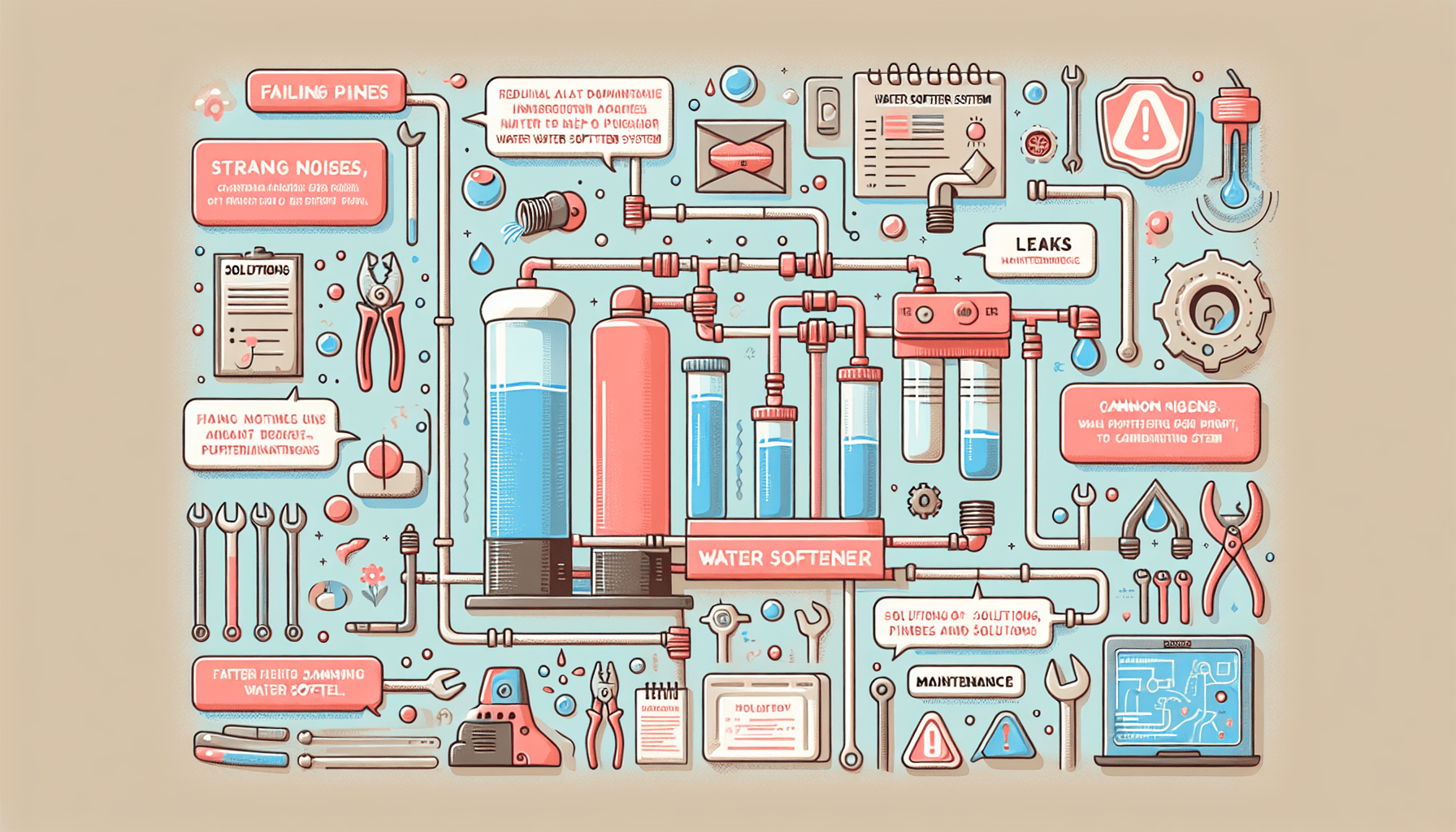Is your water softener not working as effectively as it once was? If you’re unsure whether your water softener is going bad, don’t worry, you’re not alone. Many homeowners are faced with this question. In this article, we’ll explore some telltale signs that indicate your water softener might be on the fritz. From reduced lather in your shampoo to unpleasant taste and even mineral buildup, we’ll help you identify these common indicators so that you can take the necessary steps to ensure your water softener is functioning at its best. Keep reading to find out how to keep your water softener in tip-top shape!
Decreased Water Softening
Hard water residue
If you start noticing a stubborn white residue on your dishes, appliances, or fixtures, it could be an indication that your water softener is not working effectively. Hard water residue occurs when the minerals present in hard water fail to be adequately removed during the softening process. This can leave behind a layer of deposits that can be difficult to remove and diminish the overall quality of your water.
Soap scum buildup
Another sign that your water softener might be deteriorating is an increase in soap scum buildup. Soap scum occurs when the minerals in hard water react with soap, forming a sticky residue on your skin, hair, and bathroom surfaces. If you find that you’re having a harder time getting clean or that your shower tiles are becoming increasingly difficult to maintain, it’s possible that your water softener is no longer effectively removing these minerals from your water.
Difficulty lathering
One of the most noticeable effects of hard water is the diminished ability of soap to lather. If you’re finding it more challenging to get a good lather with your shampoo, body wash, or hand soap, it may be due to the presence of minerals in your water. A properly functioning water softener should remove these minerals, allowing your soap to lather more easily and providing you with a better washing experience.
Excessive Salt Consumption
Increase in salt usage
An increase in the amount of salt you need to add to your water softener can be a clear indicator that something is wrong. If you find yourself refilling your salt tank more frequently than usual, it’s possible that your water softener is not effectively utilizing the salt to regenerate the resin beads. This can lead to issues with the softening process and result in poor water quality.
Salt bridging
Salt bridging occurs when a hard crust forms above the water level in your salt tank, preventing the salt from properly dissolving and working in the regeneration process. If you notice that the salt in your tank is not being used up as it should and there’s a hardened layer on top, it’s a sign that your water softener is struggling to function optimally.
Salt mushing
Salt mushing happens when the salt dissolves partially or completely, forming a sludgy layer at the bottom of your salt tank. This can impede the brine solution from flowing properly during the regeneration process and hinder the efficiency of your water softener. If you see a thick, muddy substance in your salt tank, it’s a clear indication that your water softener is experiencing issues.
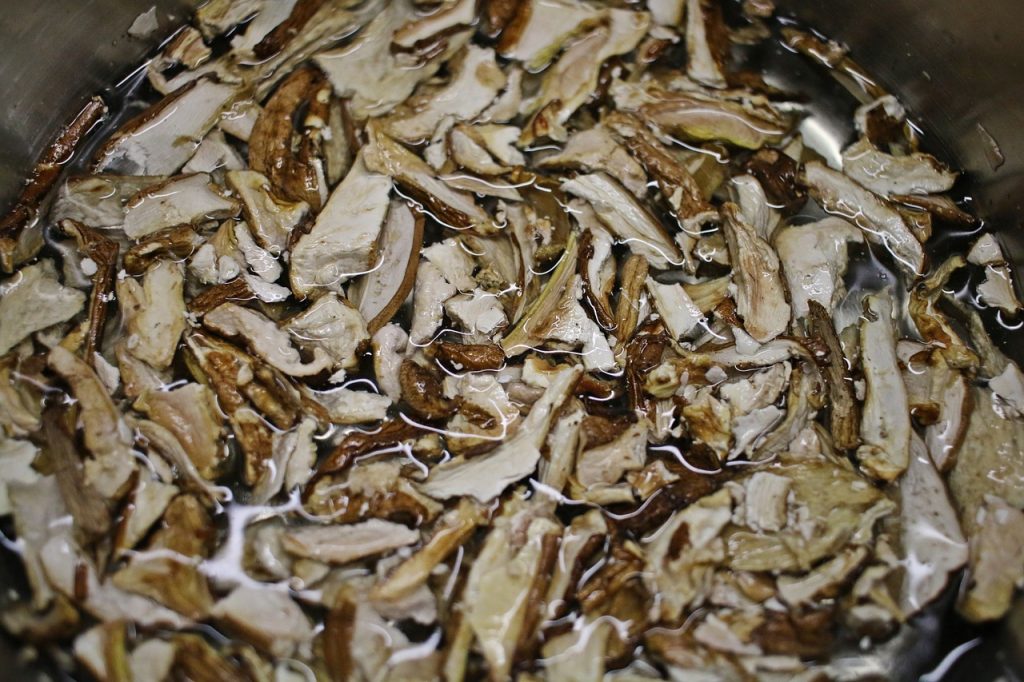
Low Water Pressure
Clogged resin tank
Over time, the resin tank in your water softener can become clogged with sediment and mineral buildup. This can restrict the flow of water through the tank and result in lower water pressure throughout your home. If you’re experiencing decreased water pressure in conjunction with other signs of a failing water softener, it may be time to inspect and clean your resin tank to restore optimal performance.
Inadequate backwashing
Backwashing is an essential process in a water softener, where the resin tank is rinsed and cleaned to remove accumulated debris. If your water softener is not backwashing properly, it can lead to a buildup of contaminants in the resin tank, which can cause decreased water pressure. Regular maintenance and ensuring that your water softener is backwashing correctly are crucial in preventing low water pressure issues.
Plumbing blockages
In some cases, a failing water softener can cause blockages within your plumbing system. The mineral buildup, sediment, or resin beads that are not being effectively removed by the softener can accumulate in your pipes, causing obstructions and reducing water flow. If you’re experiencing chronic clogs or noticeable decreases in water pressure, it’s vital to consider the possibility that your water softener may be contributing to the problem.
Resin Beads in Water
Discolored water
When resin beads start to break down and dislodge from the resin tank, they can find their way into your water supply. As a result, you may notice a change in the color of your water, such as a slight yellow or brown tint. This can be alarming and unpleasant, as no one wants to use or consume discolored water. If you notice any color changes in your water, it’s essential to investigate the source, and a failing water softener could be the culprit.
Visible resin beads
Resin beads are typically small and spherical, but if they start to break apart or dislodge from the resin tank, they can become visible in your water. You may notice tiny, translucent beads floating or settling at the bottom of your glasses or in your sinks. Seeing these beads is a clear indication that your water softener is not properly containing the resin and that it may be time for repairs or replacement.
Clogging fixtures
When resin beads make their way into your plumbing system, they can cause blockages in your fixtures and pipes. These tiny spheres can become lodged in aerators, showerheads, or faucets, resulting in reduced water flow or complete blockage. If you’re experiencing frequent clogs in your fixtures or notice reduced water pressure specifically in certain areas of your home, it’s worth considering whether your failing water softener is to blame.
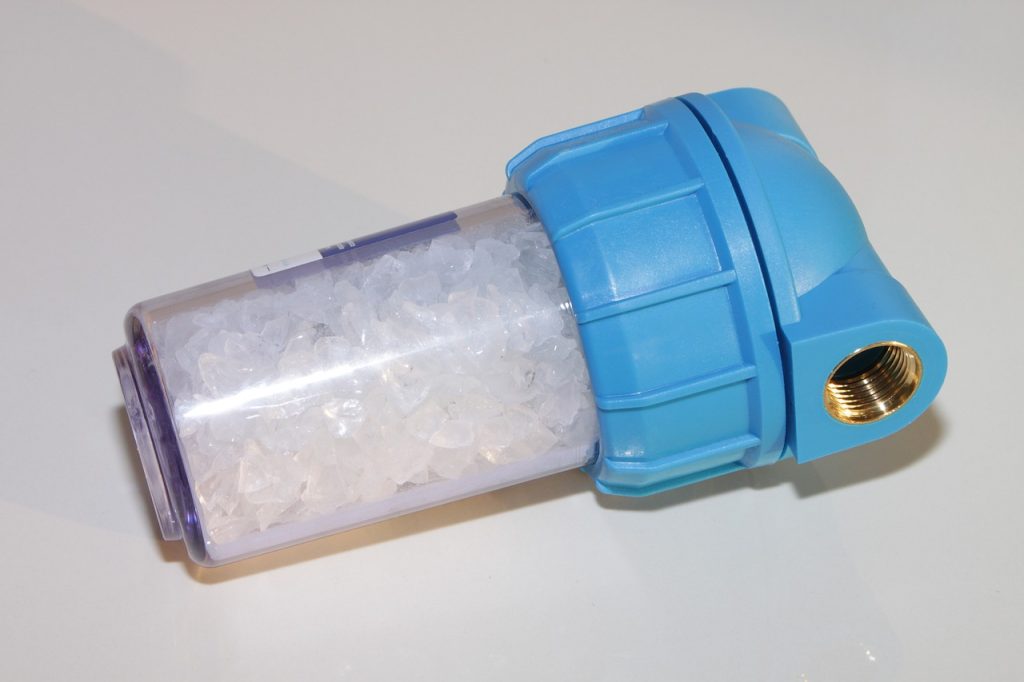
Calcium and Magnesium Deposits
Scale buildup on appliances
One of the most prominent signs of hard water is the formation of scale or mineral deposits on appliances like coffee makers, kettles, and dishwashers. These deposits are caused by the calcium and magnesium minerals in hard water that are not effectively removed by the water softener. Over time, the scale can build up inside the appliances, affecting their efficiency and lifespan. If you’re regularly dealing with scale buildup, it’s a significant indication that your water softener may not be working properly.
White spots on dishes
If your dishes, glasses, or silverware routinely come out of the dishwasher with white spots or a cloudy film, it’s likely due to the presence of calcium and magnesium deposits. A functioning water softener should remove these minerals, preventing the formation of white spots and ensuring your dishes are clean and spot-free. If you’re constantly battling these pesky residue marks, it may be time to address the effectiveness of your water softener.
Clogged showerhead
The minerals present in hard water can accumulate inside your showerhead, resulting in reduced water flow or even complete blockage. If you’re experiencing a decrease in water pressure specifically in your shower, it’s a good indication that calcium and magnesium deposits are clogging your showerhead. Regular cleaning may temporarily alleviate the issue, but if the problem persists, it’s important to assess the performance of your water softener.
Unusual Sounds
Loud banging or thumping
If you start hearing loud banging or thumping sounds coming from your water softener, it could be a sign that something is amiss. These noises are typically caused by water hammer, a phenomenon that occurs when there’s a sudden change in water flow or pressure within the system. Water hammer can put stress on the pipes and components of your water softener, leading to potential damage or malfunction. If you hear these sounds, it’s crucial to have your water softener checked to prevent further issues.
Buzzing or vibrating noises
Unusual buzzing or vibrating noises emanating from your water softener can also indicate a problem. These noises often occur when certain components, such as valves or motors, become worn out or begin to malfunction. Ignoring these sounds can potentially lead to more extensive damage to your system. Therefore, it’s advisable to have a professional inspect and repair your water softener to eliminate any buzzing or vibrating noises.
Continuous running water
If you notice that your water softener seems to be running continuously, even when it’s not in the regeneration cycle, it’s a sign that there may be a malfunction. This constant running water can indicate a defective valve or timer motor, preventing the system from functioning properly. Continuous water flow not only wastes water but can also strain your water softener components. If you observe this issue, seeking professional assistance is recommended.
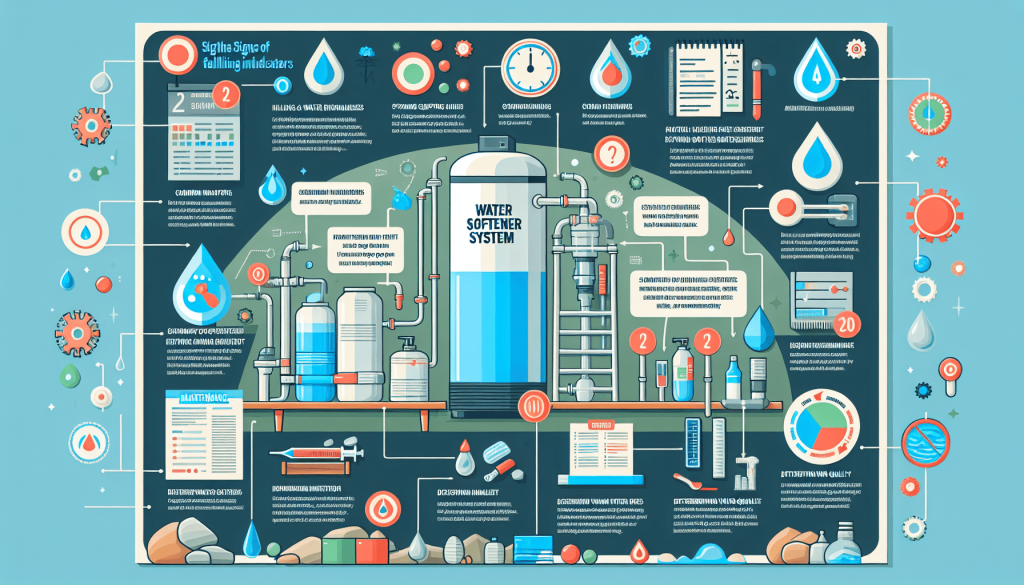
Deteriorating System Components
Leaking tanks or valves
Water leaking from tanks or valves is a clear indication of a failing water softener. Leaks can occur due to worn-out seals, cracks in the tanks, or damaged valves. Not only can these leaks waste water, but they can also lead to further damage to your system if left unattended. It’s important to address leaks promptly and have the necessary repairs done to prevent more significant issues with your water softener.
Cracked or broken components
Cracks or breakages in the various components of your water softener can significantly impact its performance. Whether it’s a damaged resin tank, a broken bypass valve, or a cracked control head, any compromised part can lead to inadequate softening or even complete system failure. Regular inspection of your water softener is key to identifying and addressing any cracks or breakages before they cause further damage.
Rusty or corroded parts
Rust or corrosion on the components of your water softener can be a sign of long-term wear and tear. This can happen due to exposure to moisture, high mineral content in hard water, or the age of the system. Rust and corrosion can weaken the integrity of the parts and reduce the overall effectiveness of your water softener. If you notice any signs of rust or corrosion, it’s important to have the affected parts repaired or replaced promptly to avoid system failure.
Malfunctioning Control Panel
Inaccurate display readings
If the control panel on your water softener is displaying inaccurate information or inconsistent readings, it points to a malfunctioning system. The control panel is essential for monitoring and adjusting various settings on your water softener, such as regeneration cycles and water usage. When the display readings are unreliable, it becomes challenging to properly maintain and troubleshoot your system. If you suspect your control panel is not functioning correctly, seeking professional assistance can help address the issue.
Failure to cycle properly
Proper cycling is crucial for the effective operation of a water softener. If your system is not cycling correctly, it can lead to insufficient regeneration, incomplete cleaning of the resin beads, and ultimately, poor water softening performance. Signs of a malfunctioning cycle include unusually short regeneration cycles, excessive water usage during regeneration, or continuous running water outside of regeneration periods. Addressing these issues promptly can ensure your water softener maintains optimal performance.
Non-responsive controls
When the controls on your water softener become unresponsive or fail to function as intended, it can severely impact your ability to adjust settings or address potential problems. Non-responsive controls can be caused by internal electrical issues or worn-out control buttons and switches. If you find that your water softener controls are no longer responsive or are not providing the expected results, professional evaluation and repair may be necessary.
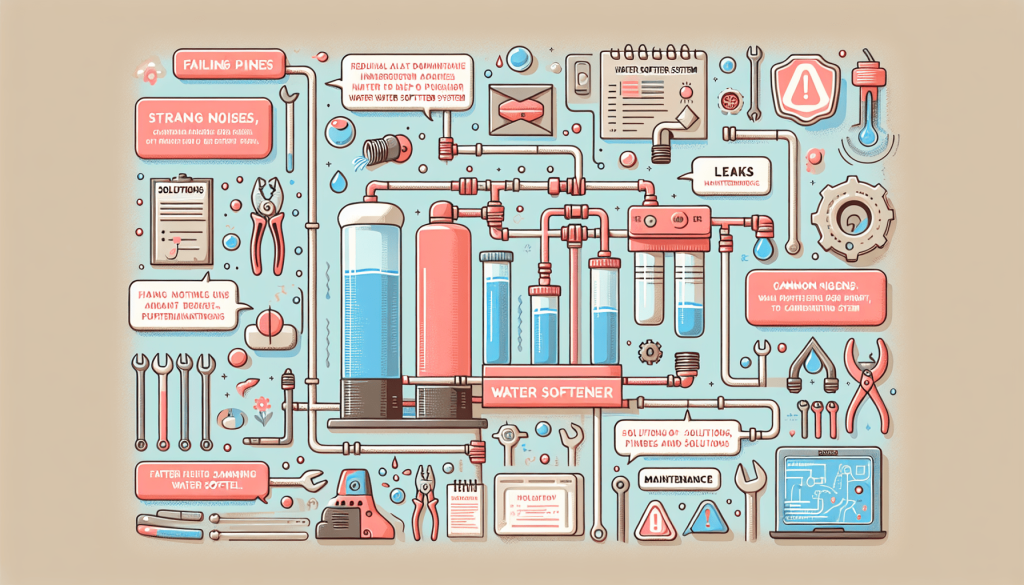
Increased Energy Consumption
Inefficient regeneration process
Water softeners typically undergo a regeneration process to restore the resin beads’ ability to remove minerals effectively. If your water softener is not regenerating efficiently, it may require more energy and water to complete the process, resulting in increased energy consumption. Inefficient regeneration can be caused by factors such as improper timing, programming errors, or worn-out components. Monitoring your energy bills can help you identify any sudden spikes that may indicate an issue with your water softener’s regeneration process.
Frequent system cycling
A water softener that cycles too frequently can lead to increased energy consumption. Frequent cycling can occur due to a variety of reasons, including insufficient resin capacity, inaccurate settings, or malfunctioning components. As your water softener cycles more frequently, it leads to unnecessary water and electricity usage, resulting in higher energy bills. If you notice your water softener cycling excessively, it’s important to investigate the underlying cause to minimize energy waste.
Higher electricity bills
A failing water softener can contribute to higher electricity bills due to the various inefficiencies and malfunctions previously mentioned. Whether it’s a result of increased energy consumption during regeneration, continuous running water, or frequent system cycling, a water softener that is not functioning optimally can impact your overall energy usage. Monitoring your electricity bills over time can help you identify any unwarranted increases and prompt you to address potential issues with your water softener.
Age of the Water Softener
Typical lifespan
The lifespan of a water softener can vary depending on factors such as the quality of the system, manufacturer, and maintenance. On average, a well-maintained water softener can last anywhere from 10 to 15 years. However, it’s important to note that individual experiences may differ, and some systems may require replacement sooner or last longer. Regular maintenance and timely repairs can extend the lifespan of your water softener and help you get the most out of your investment.
Manufacturer’s recommendations
The manufacturer of your water softener will typically provide specific recommendations regarding the lifespan and expected performance of the system. These recommendations may include information on routine maintenance, parts replacement, and the average lifespan of their products. Adhering to the manufacturer’s guidelines can help maximize the longevity and effectiveness of your water softener. If you’re unsure about the specific recommendations, consulting the product manual or contacting the manufacturer directly can provide valuable information.
Signs of wear and tear
As your water softener ages, you may start noticing signs of wear and tear that indicate a potential decline in performance. These signs can include leaks, rust or corrosion, unusual noises, or consistent issues with water quality. While each symptom on its own may not necessarily indicate a failing water softener, a combination of these signs could suggest that your system is approaching the end of its lifespan. Regular inspection and addressing any wear and tear promptly will help you identify potential problems before they become more significant and costly to fix.
In conclusion, understanding the signs of a failing water softener is essential for maintaining the quality of your water and preventing costly repairs or replacements. By being aware of decreased water softening, excessive salt consumption, low water pressure, resin beads in water, calcium and magnesium deposits, unusual sounds, deteriorating system components, malfunctioning control panel, increased energy consumption, and the age of your water softener, you can identify potential issues and take appropriate action. Regular maintenance and timely repairs will ensure that your water softener continues to provide you with softened water and the benefits that come with it.


